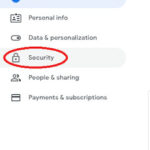Sender Policy Framework (SPF) is a critical email authentication method to prevent email spoofing. A common challenge arises when utilizing a mail hub for multiple domains: outgoing emails might fail SPF checks because they appear to originate from a server IP address not explicitly authorized by the sending domain’s SPF record. This article will explore how to effectively address this issue and guarantee your server IP successfully passes SPF verification.
Understanding SPF and Mail Hubs in Email Delivery
SPF works by allowing domain owners to specify which mail servers are authorized to send emails on behalf of their domain. This is done through a public SPF record in the domain’s DNS settings. When a recipient mail server receives an email, it checks the SPF record of the sender’s domain to verify if the sending server’s IP address is listed as a legitimate sender. If the sending IP is not authorized, the SPF check fails, potentially leading to delivery issues or emails being marked as spam.
In scenarios involving mail hubs, the complexity increases. A mail hub, often used to centralize email scanning and routing for multiple domains, can alter the apparent origin of outgoing emails. Even if an email originates from a server within a hosted domain, when routed through a mail hub, it might appear to be sent from the mail hub’s IP address. This discrepancy can cause SPF failures if the recipient’s server performs a check against the original sending domain’s SPF record, which may not include the mail hub’s IP.
Resolving SPF Failures for Mail Hub IPs
To ensure your mail server IP passes SPF checks in a mail hub environment, consider these key strategies:
1. Update SPF Records to Include the Mail Hub IP
The most direct and effective solution is to modify the SPF records of your hosted domains to explicitly authorize the mail hub’s IP address as a legitimate sender. This informs recipient servers that emails originating from these domains but routed through your mail hub are indeed valid.
You can achieve this by including the mail hub’s IP address in the SPF record using mechanisms like ip4: or ip6:. For instance, if your mail hub’s IP address is 203.0.113.45, you would add ip4:203.0.113.45 to the SPF record. If you are already using MX records in your SPF, you might consider adding the mail hub’s IP in addition to or in conjunction with your MX records, depending on your specific setup and email flow.
2. Understand SPF Mechanisms and Qualifiers
SPF records utilize various mechanisms (e.g., mx, a, ip4, ip6, include) and qualifiers (e.g., +, -, ~, ?) to define authorization rules. The original post mentions using v=spf1 mx ~all. The mx mechanism authorizes the IP addresses listed in the domain’s MX records. The ~all qualifier indicates a softfail, meaning emails failing SPF checks will be accepted but marked.
When adjusting your SPF records, ensure you understand these mechanisms and qualifiers to configure SPF correctly for your mail hub setup. For example, if you want emails from your mail hub to definitively pass SPF, you might consider using a -all qualifier instead of ~all for stricter enforcement after explicitly including your mail hub’s IP. However, ~all is often preferred for initial configurations to avoid accidental rejection of legitimate emails.
3. Consider SPF for Redirected Emails
The original question also touches on email redirection. When emails are redirected through your server, SPF checks can become more complex. If you are redirecting emails, ensure that the SPF records of the domains involved account for the IP addresses of servers handling the redirection to prevent SPF failures. This might require more nuanced SPF configurations, potentially involving include: mechanisms if redirections involve other domains or services.
4. Verify Recipient-Side SPF Checking
As the original poster speculated, inconsistencies in SPF check results might be due to variations in recipient server behavior. Some recipient servers might not perform strict SPF checks, or their SPF checking policies might differ. While you should not rely on recipient leniency, understanding that recipient-side SPF checking can vary is helpful in troubleshooting SPF-related issues. However, your primary focus should be on correctly configuring your SPF records to ensure they are valid and comprehensive, regardless of recipient behavior.
Conclusion
Ensuring your mail server IP passes SPF checks is essential for reliable email delivery and maintaining a positive sender reputation. In mail hub environments, carefully configuring SPF records to include the mail hub’s IP address is crucial. By understanding SPF mechanisms, properly updating your SPF records, and considering scenarios like email redirection, you can effectively resolve SPF failures and enhance the deliverability of your emails. Regularly testing your SPF configuration and monitoring email delivery reports can further help maintain optimal email authentication and delivery performance.

